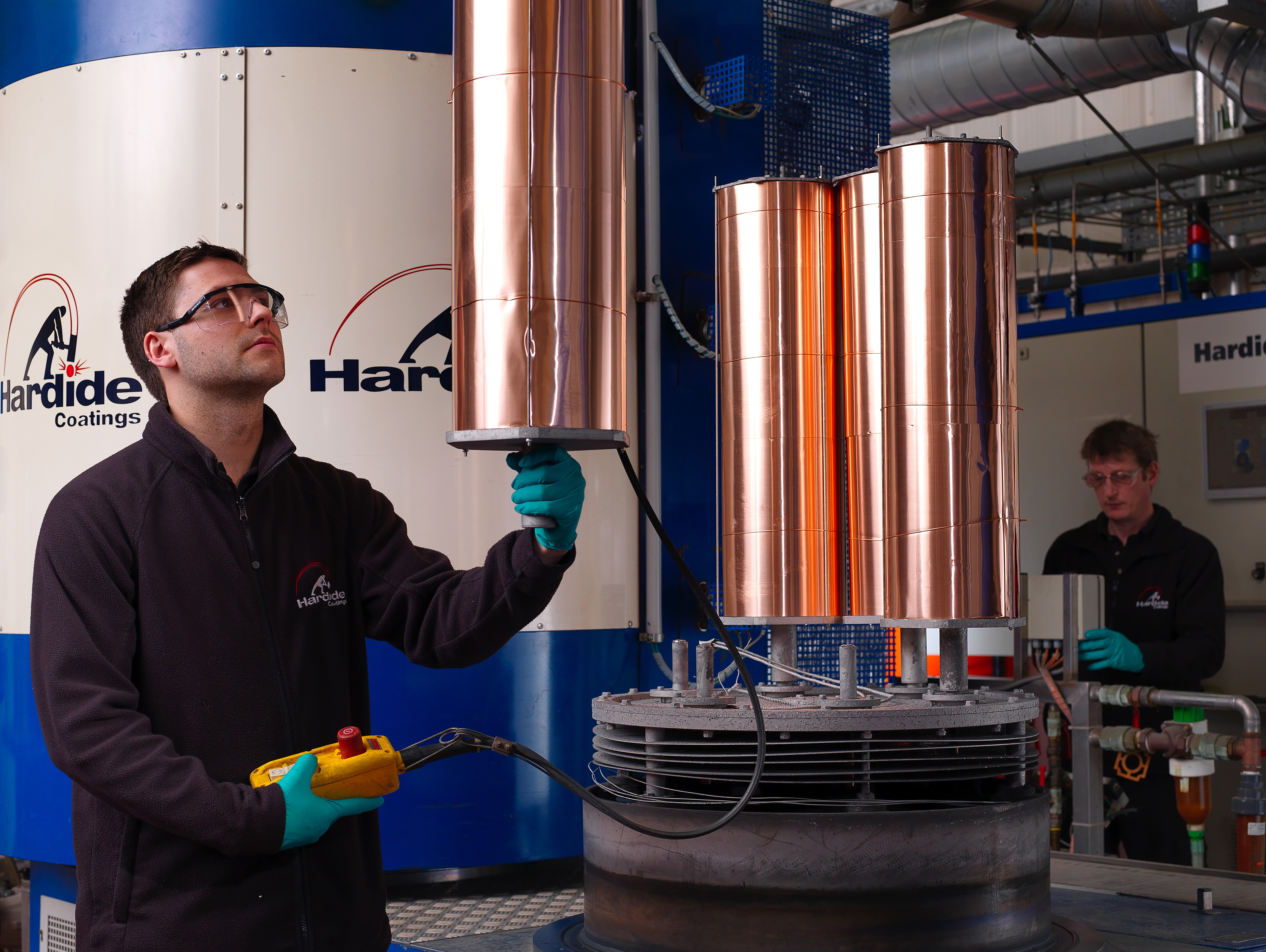
Hardide’s Hardide-T coating has shown improved fracture toughness and anti-galling properties in tests by students from the UK’s University of Southampton advanced tribology program.
Christian Micallef and Chen Wang, both studying MSc engineering materials (advanced mechanical engineering science), undertook research with Hardide Coatings as part of their masters degree.
In the fracture toughness tests, four samples were coated within the range of Hardide-T hardness values and tested using a nano-indenter. After 100 nano-impact tests, the samples showed no signs of fracture. Tests were then carried out on the samples by making deep indentations with a sharp diamond cube corner indenter. Although indents were made, these tests also failed to induce fractures to the coating.
‘Fracture toughness and galling resistance of the coating were two areas where we wanted further test results to get quantitative measurements and to demonstrate the effectiveness of the coating,’ said Dr Yuri Zhuk, technical director of Hardide Coatings. ‘From the experience of using our coatings in extreme conditions we were confident that the Hardide coated samples would perform well but we were very pleased at the strength of the results.’
Extreme conditions
To measure the anti-galling resistance, tests were carried out using the TE77 standard galling test. In the control test, two stainless steel samples were used and a Coefficient of Friction of 1 was established under a load of just 65 N (7kg) with galling occurring at 500 N (51kg). In the same test using two Hardide coated samples, Coefficient of Friction stabilised at 0.2 and under the maximum load of 800 N (82kg) no galling occurred.
‘The galling test in particular is very valuable for tooling operating in extreme conditions,’ continued Dr Zhuk. ‘As these tools are often in exposed environments, the traditional lubrication between metal components can be abraded, squeezed under high loads or washed away by the elements. The tests show that Hardide parts do not gall even under maximum load and are ideal for these tough conditions.’
This story is reprinted from material from Hardide, with editorial changes made by Materials Today. The views expressed in this article do not necessarily represent those of Elsevier.



